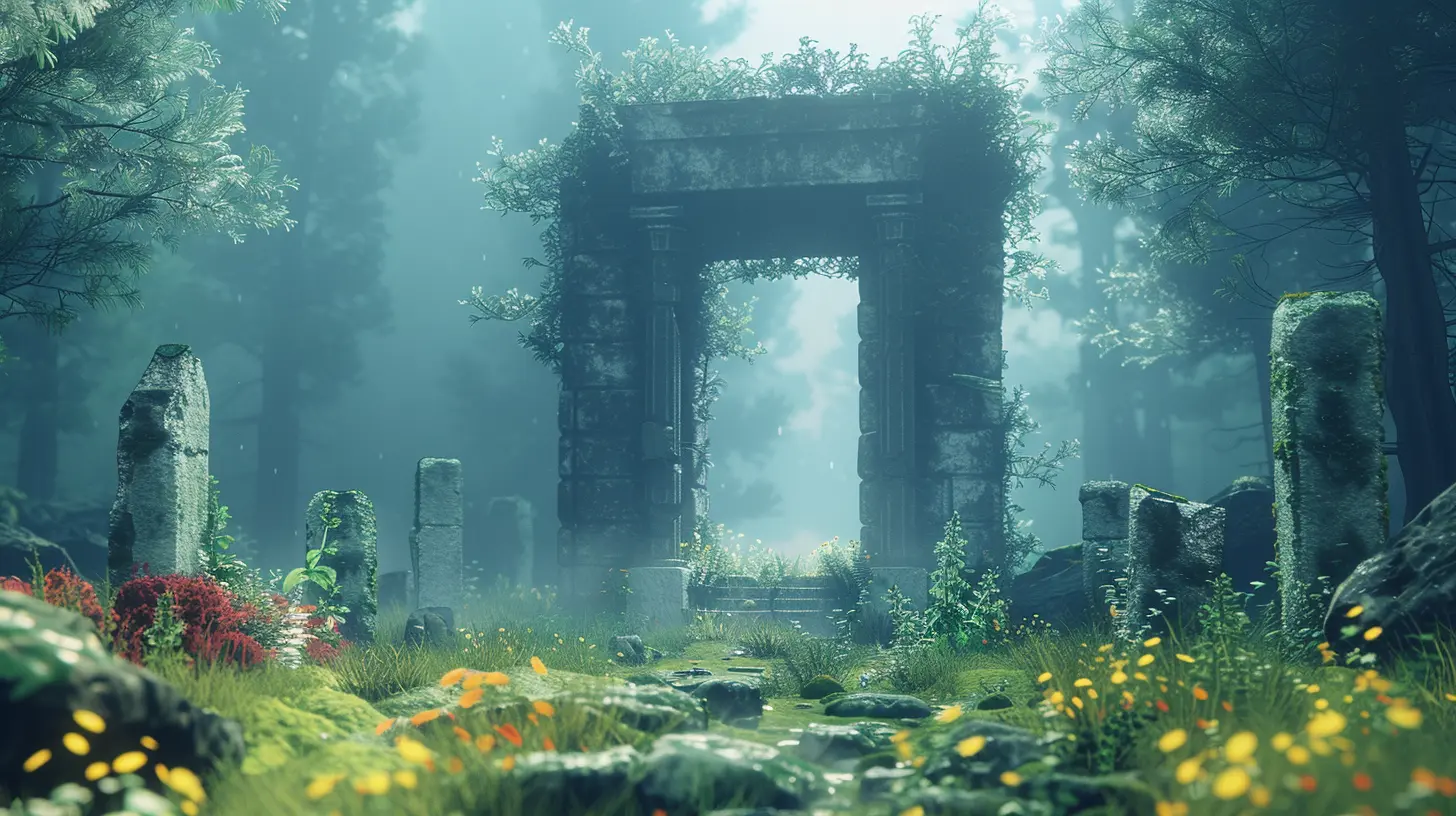Understanding Prefabs and Nested Prefabs in Unity
4 August 2025
If you've ever dipped your toes into Unity game development, you've probably heard of something called "Prefabs." And if you've taken it a step further, you’ve likely encountered the magical concept of "Nested Prefabs." But what are they, really? Why do game devs rave about them like they’re the secret sauce to faster, smarter development?
Well, let me grab you a virtual coffee, and let’s sit down to untangle the mystery behind Prefabs and Nested Prefabs in Unity. If you're building a game that doesn’t crumble every time you make a change, this is one concept you really want to master.
What Exactly is a Prefab Anyway?
Alright, let's break it down.Imagine you're designing a sci-fi shooter, and you've created a super cool laser turret. It has 3D meshes, scripts, particle effects, and maybe even a cute animation when it powers up. Now, you want that same turret to appear in 20 different places across your game. Are you going to rebuild it from scratch every time? No way!
That’s where Prefabs come in.
A Prefab in Unity is like a reusable template. It packages a GameObject along with all its components and settings, and lets you reuse it over and over again across different scenes in your project. Think of it like a blueprint. Need it again? Drag, drop — boom, ready to go.
Why Should You Care About Prefabs?
Good question. Here's the deal:- Consistency: Every instance of the Prefab is identical, unless you tweak it locally.
- Efficiency: Update the original Prefab, and all instances reflect those changes. No need to go one by one.
- Organization: Helps you manage complex scenes without losing your mind.
- Collaboration-Friendly: Makes it easier to work in teams since Prefabs can be edited independently.
If you're working on anything bigger than a one-scene prototype, Prefabs can save you hours — maybe days — of work.
Creating Your First Prefab
Alright, enough theory. Let’s get practical for a second.1. Create a GameObject in your scene (a character, an enemy, an environment prop — anything).
2. Drag that object from the Hierarchy to the Project window.
3. That’s it. Congrats, you’ve made your first Prefab!
Now your object exists outside the scene. You can drag it into other scenes, reuse it across the board, and even version control it better.
Let's Talk Prefab Instances
When you place a Prefab into a scene, you're creating an instance of that Prefab. It’s kind of like baking cookies from the same dough. You can decorate each cookie differently (override properties), but the base comes from the same recipe.Now here's a nifty trick: if you update the dough — I mean, the original Prefab — all the cookies update, too. That’s the magic right there. It keeps things modular and maintainable.
Okay, But What About Nested Prefabs?
Ah yes, Nested Prefabs — the topic that makes devs both cheer and cry tears of joy.Unity introduced Nested Prefabs as a major upgrade in Unity 2018.3, and oh boy, it changed the game. Before that, you had to jump through hoops to reuse Prefabs inside other Prefabs. Not anymore!
A Nested Prefab is essentially a Prefab inside another Prefab. Like those Russian nesting dolls, but for game objects.
Why Are Nested Prefabs Such a Big Deal?
Because game objects in real games are rarely simple. Think of a spaceship:- You've got the main body
- You’ve got thrusters (each possibly a Prefab)
- Guns (also Prefabs)
- UI elements for health, etc.
Without Nested Prefabs, you'd have to rebuild that whole structure every single time or break the Prefab link — which defeats the whole purpose.
With Nested Prefabs, you can build complex hierarchies that are modular, reusable, and easy to maintain.
Building a Nested Prefab – Step-by-Step
Let’s go through a quick example.1. Create the Base Parts
Build smaller, reusable Prefabs like:
- A “Gun” Prefab
- A “Thruster” Prefab
- A “Cockpit” Prefab
2. Build the Parent Object
Create a new GameObject, say “Spaceship,” and assemble your parts by dragging in your Gun, Thruster, and Cockpit Prefabs.
3. Save the Whole Thing as Another Prefab
Drag the “Spaceship” GameObject into the Project window, and Unity automatically creates a new Nested Prefab using the components.
Congrats, you’ve just nested Prefabs like a pro!
Managing Overrides and Conflicts
Here’s the tricky part — overrides. When you make changes to a Prefab instance in a scene, Unity marks those changes as overrides. This is great when you want specific variations without affecting the original Prefab.But what if you want to push those changes back to the main Prefab? Or, maybe discard them?
Unity’s Prefab editor gives you control to:
- Apply overrides back to the Prefab
- Revert the object to its original state
- Unpack the Prefab if needed
It’s kind of like editing a Google Doc. You're free to make local edits, but you can always sync them back to the master if you choose.
Common Pitfalls with Nested Prefabs (And How to Avoid Them)
Alright, let’s be real. Nested Prefabs can be incredibly powerful, but only if you manage them wisely.1. Over-Nesting
You can get carried away and create Prefabs within Prefabs within Prefabs… and suddenly your hierarchy looks like a tangled ball of Christmas lights. Keep nesting shallow and purposeful.2. Relying Too Much on Overrides
If every Prefab instance has overrides, it's hard to track what's different and why. Try to push changes into the base Prefab when possible.3. Lack of Naming Conventions
"Prefab1," "Prefab2," and "NewPrefab" won’t cut it. Use clear names for both your assets and GameObjects to avoid confusion.Real-World Example: RPG Inventory System
Let's say you're making an RPG with a complex inventory system. You have:- A base “Item” Prefab
- A “Weapon” Prefab (nested from Item)
- A “Magic Sword” Prefab (nested from Weapon)
Now, if you want all weapons to have a new particle trail effect, you just add it to the “Weapon” Prefab. All weapons, including the “Magic Sword,” instantly get the update. Pretty sweet, right?
This is the kind of scalability that Nested Prefabs open up.
Tips to Master Prefabs Like a Rockstar
1. Break Down Complex Objects Early: Think in modular pieces, even if you’re just prototyping.2. Use Prefab Variants: These allow you to create new Prefabs that inherit from a base but still let you make tweaks.
3. Stay Consistent with Folder Structure: Keep your Prefabs organized in folders like `/Prefabs/Characters/Enemies/`.
4. Avoid Direct Scene Modifications: Do most of your edits inside the Prefab editor to keep control.
5. Always Test Changes in Scene Instances: Don’t assume an edit works just because it looks good in the Prefab preview.
The Verdict: Are Prefabs and Nested Prefabs Worth It?
Absolutely. If you're building anything beyond a basic prototype, embracing Prefabs and Nested Prefabs is like giving your workflow a rocket boost.They enforce structure, reduce repetitive work, and give you the ability to scale without reinventing the wheel. Sure, they come with a bit of a learning curve, especially when you start nesting heavily. But once you get the hang of it, you’ll wonder how you ever lived without them.
Think of Prefabs as the LEGO bricks of Unity. Once you’ve got the parts built, assembling the big picture becomes a breeze.
Final Thoughts
Whether you’re a solo dev working on your first indie title or part of a big team shipping AAA games, understanding Prefabs and Nested Prefabs will future-proof your projects in a big way.Don’t just use them — design with them in mind. Build your game like a stack of reusable building blocks. That way, when the time comes to add a new feature or fix something minor, it won’t feel like pulling a thread from a sweater and watching it unravel.
You've got this. Happy prefab-ing!
all images in this post were generated using AI tools
Category:
Unity GamesAuthor:

Tayla Warner
Discussion
rate this article
1 comments
Wilder Matthews
This article effectively breaks down the concepts of prefabs and nested prefabs in Unity, making it accessible for both beginners and experienced developers. Great insights!
August 13, 2025 at 3:36 PM

Tayla Warner
Thank you for your kind words! I'm glad you found the article helpful for both beginners and experienced developers.


